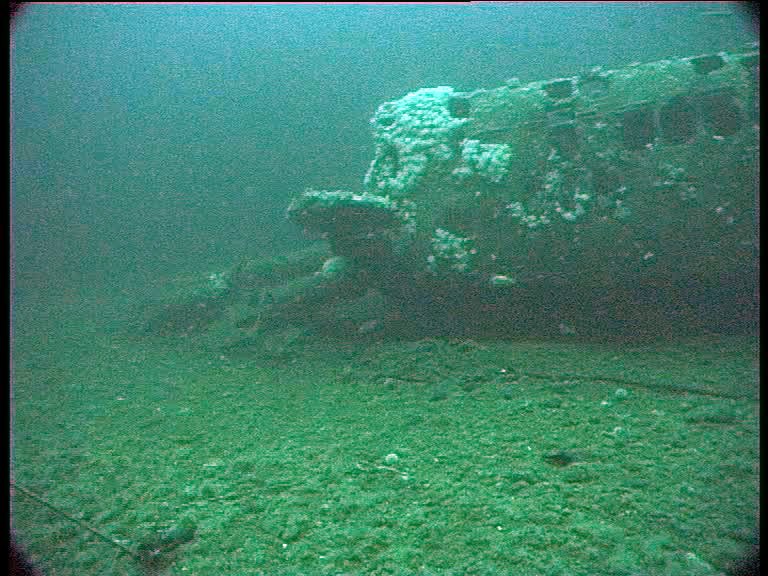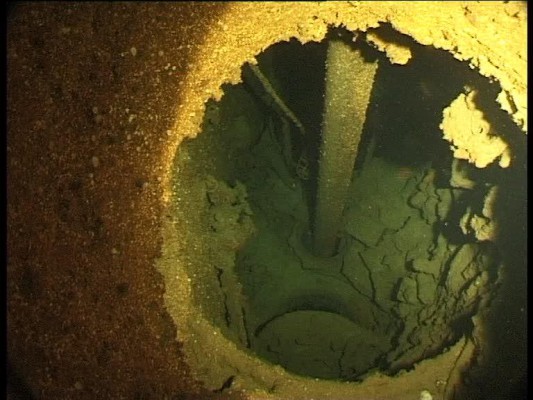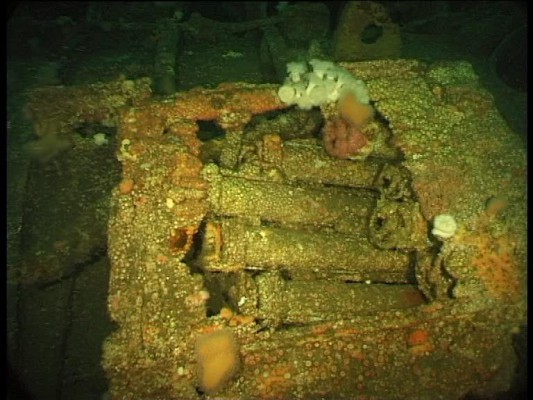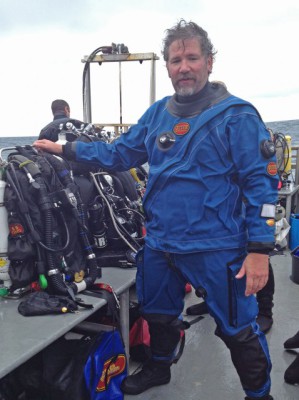U-89 was one of the 329 submarines serving in the Imperial German Navy in World War I. U-89 was engaged in the naval warfare and took part in the First Battle of the Atlantic. On 12 February 1918, U-89 was rammed and sunk byHMS Roxburgh off Malin Head. There were no survivors. Amazing images from Dr Innes McCartney – the condition of this wreck is incredible.
U89 survived just over six months in service before it sunk by ramming off Malin Head. Unfortunately for the U-89, the vessel popped up 200 yards in front of the cruiser HMS Roxburgh, which with out hesitation, rammed U-89’s conning tower. Soon after, explosions were heard.
German voices were also heard amongst the waves. U-89 was sunk with the loss of all their lives. The large U-boats of the Kaiserliche Marine are fairly uncommon wrecks in coastal waters which made investigating this site a most interesting dive. The shot line has come down off the port side bows of the wreck (Innes McCartney)
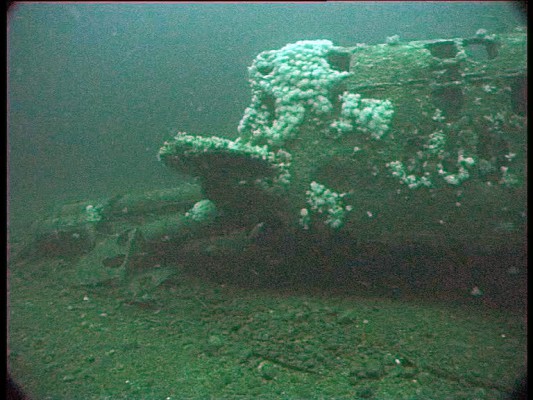 Torpedo tubes come into view (Innes McCartney)
Torpedo tubes come into view (Innes McCartney)
Looking down the conning tower hatch, the shaft of the wide angle periscope can be seen as well as the open hatch leading to the control room (Innes McCartney).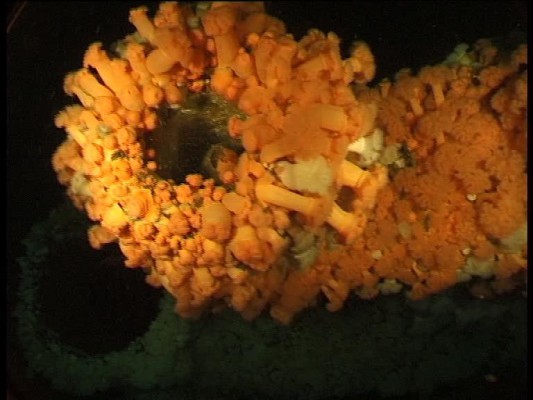 The wide angle periscope in its housing, seen from above (Innes
The wide angle periscope in its housing, seen from above (Innes
The top of the attack periscope (Innes McCartney)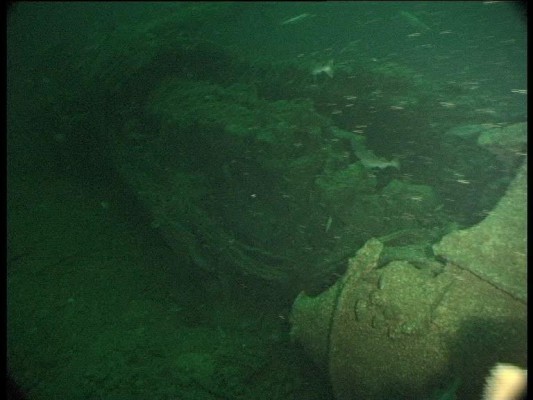
The damage which sunk U89 now becomes obvious – HMS Roxburgh clearly ran over the engine room, ripping the roof off (Innes McCartney).
RU ammunition locker (Innes McCartney).
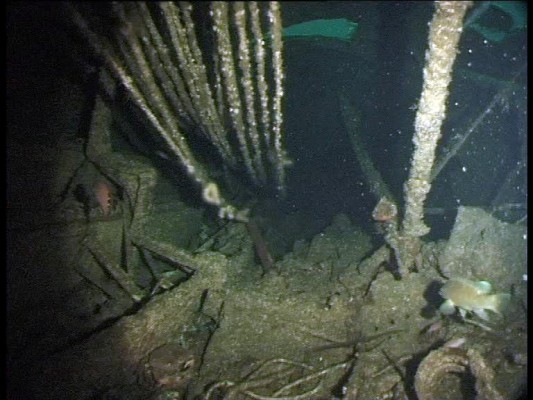 Pointing my camera inside reveals a mass of debris and electrical cables. A hole which looks like the type caused by the slicing action of a propeller can be seen (Innes McCartney)
Pointing my camera inside reveals a mass of debris and electrical cables. A hole which looks like the type caused by the slicing action of a propeller can be seen (Innes McCartney)
.
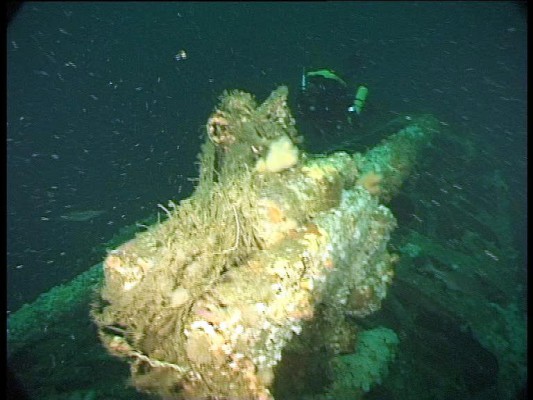 The breech block of the 105mm gun with diver behind (Innes McCartney).
The breech block of the 105mm gun with diver behind (Innes McCartney).
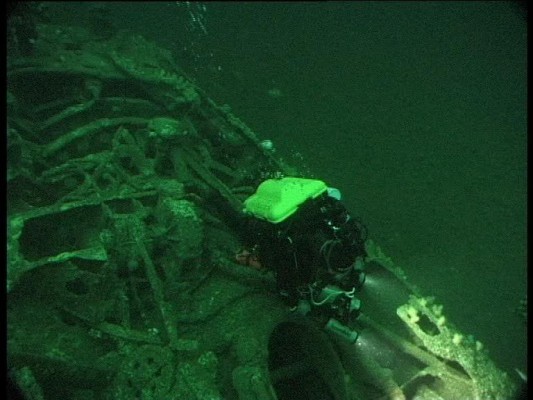 Diver by the forward torpedo hatch (Innes McCartney).
Diver by the forward torpedo hatch (Innes McCartney).
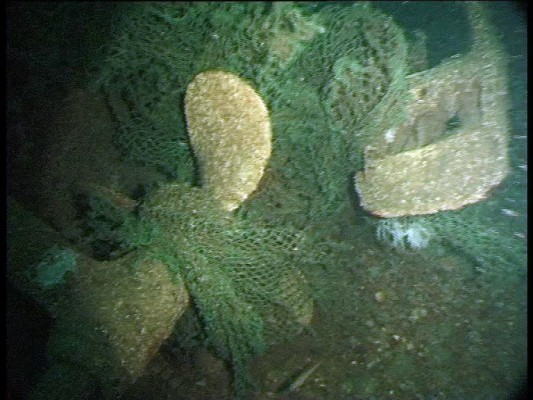 The netting appears to have drifted into the wreck (Innes McCartney)
The netting appears to have drifted into the wreck (Innes McCartney)
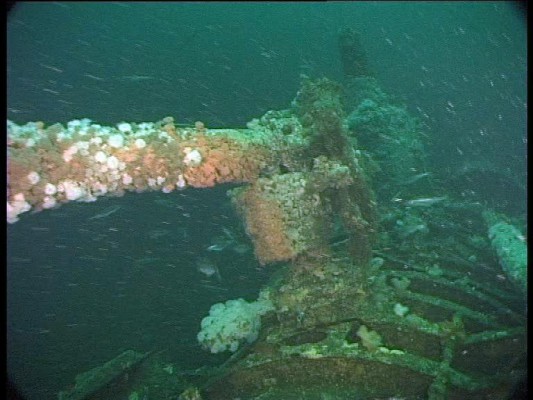 U89 carried two guns. The large 105mm was on the foredeck (Innes McCartney)
U89 carried two guns. The large 105mm was on the foredeck (Innes McCartney)
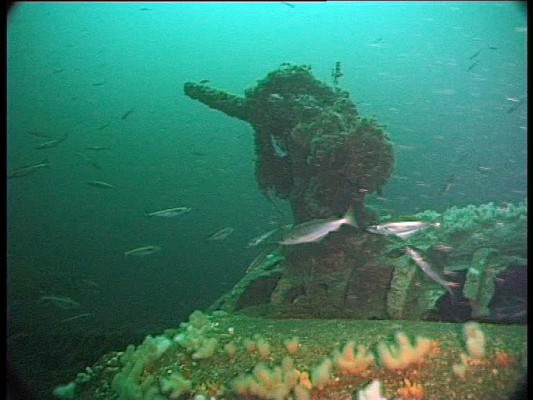 The 88mm gun mounted aft (Innes McCartney)
The 88mm gun mounted aft (Innes McCartney)
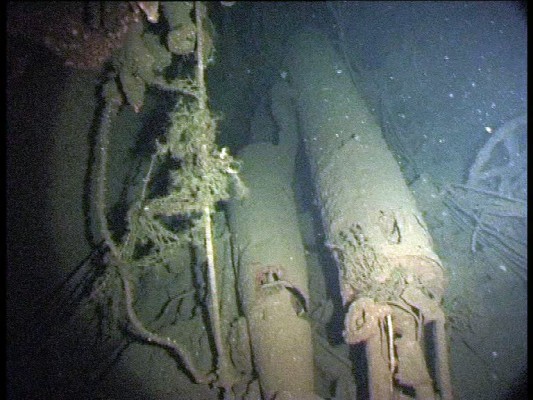 Torpedoes in the aft torpedo room (Innes McCartney).
Torpedoes in the aft torpedo room (Innes McCartney).
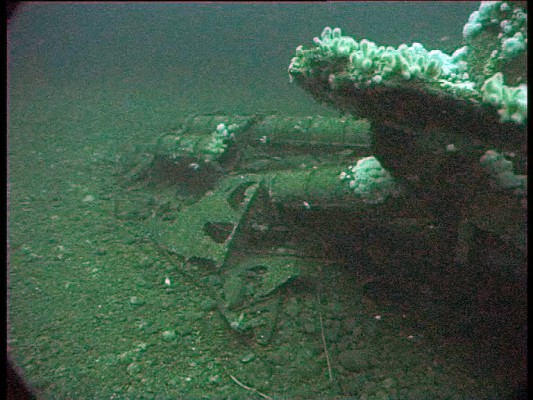 Torpedo tubes come into view (Innes McCartney).
Torpedo tubes come into view (Innes McCartney).
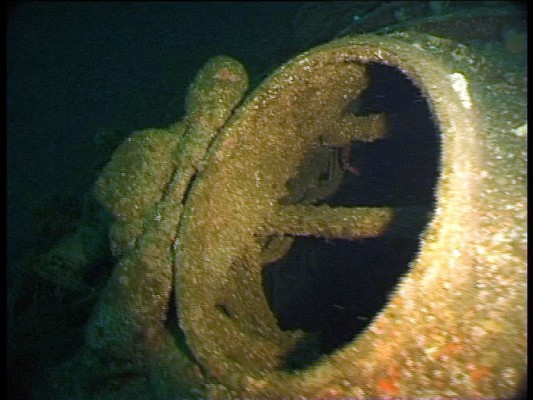 Aft torpedo hatch (Innes McCartney).
Aft torpedo hatch (Innes McCartney).
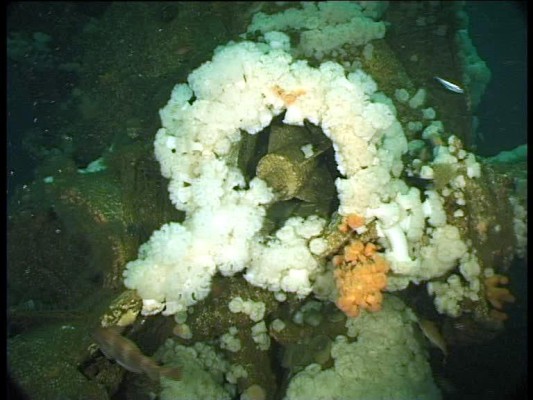 Inside are fins of a torpedo (Innes McCartney)
Inside are fins of a torpedo (Innes McCartney)
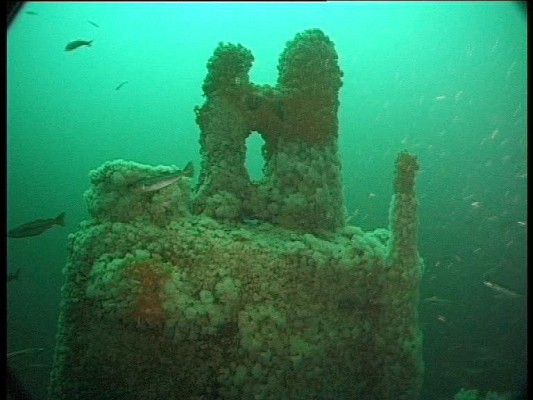 The double periscope housing on the conning tower with hatch behind (Innes McCartney).
The double periscope housing on the conning tower with hatch behind (Innes McCartney).
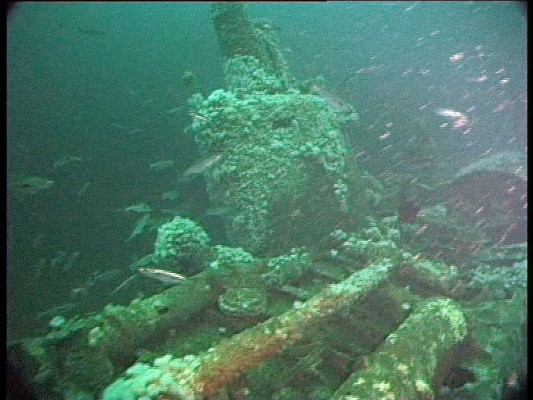 Aft of the 105mm, the conning tower comes into view (Innes McCartney).
Aft of the 105mm, the conning tower comes into view (Innes McCartney).
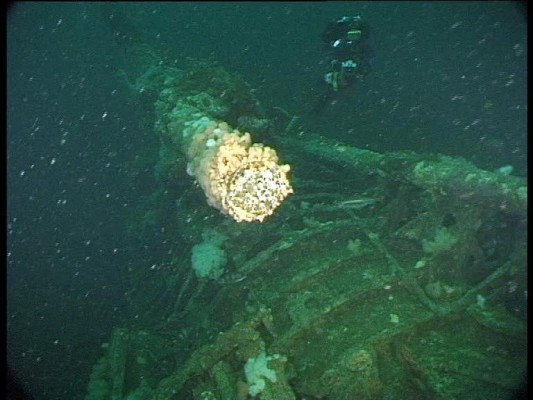 Tampion in the muzzle of the 105mm keeps the water out (Innes McCartney).
Tampion in the muzzle of the 105mm keeps the water out (Innes McCartney).
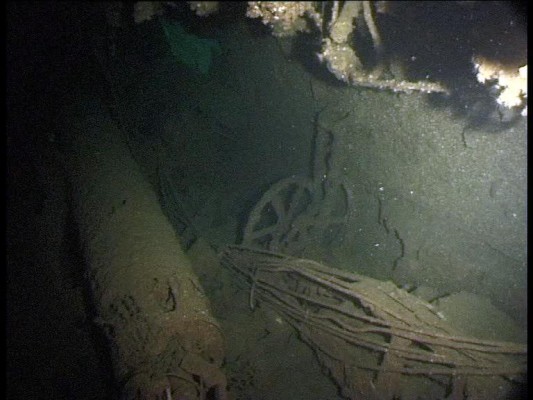 Auxiliary steering position? in the aft torpedo room (U505 has this feature) (Innes McCartney)
Auxiliary steering position? in the aft torpedo room (U505 has this feature) (Innes McCartney)
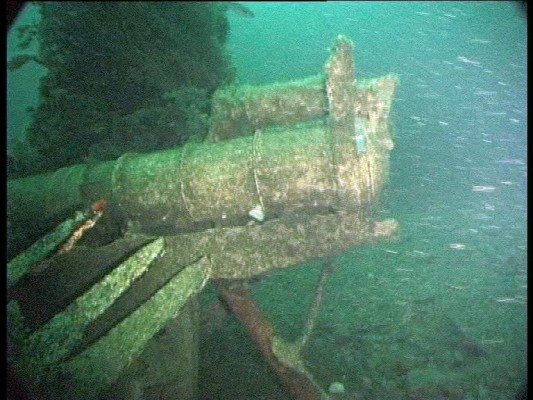 Stern torpedo tubes with post side hydroplane in foreground (Innes McCartney).
Stern torpedo tubes with post side hydroplane in foreground (Innes McCartney).
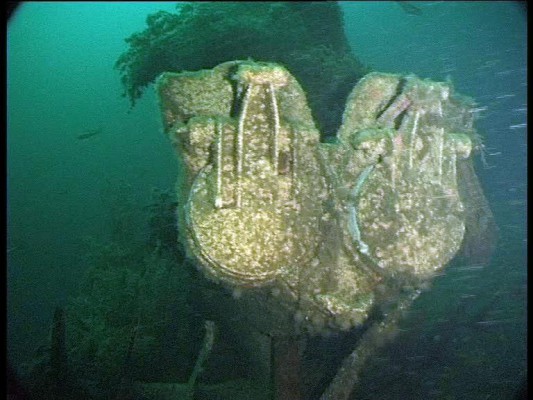 Stern tubes with doors shut (Innes McCartney)
Stern tubes with doors shut (Innes McCartney)
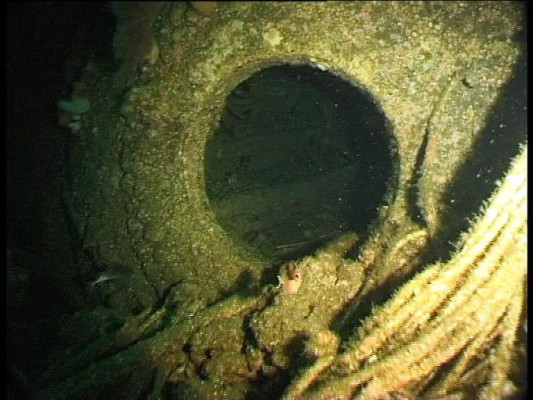 The interior beckons.. (Innes McCartney).
The interior beckons.. (Innes McCartney).
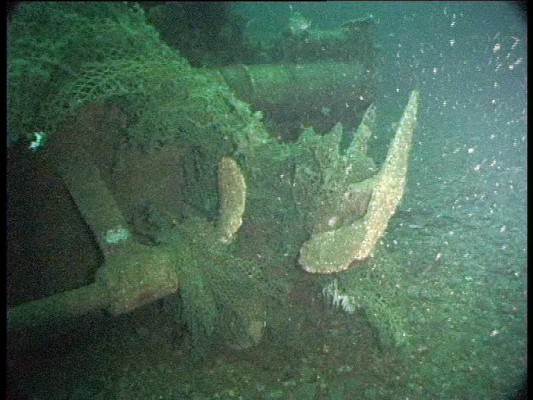 The much corroded hydroplane appears to have been set to hard arise (Innes McCartney).
The much corroded hydroplane appears to have been set to hard arise (Innes McCartney).
German Type U 87 submarines were preceded by the shorter Type U 81 submarines. U-89 had a displacement of 757 tonnes (745 long tons) when at the surface and 998 tonnes (982 long tons) while submerged. It had a total length of 215 ft 11 in (65.81 m), a pressure hull length of 164 ft 3 in (50.06 m), a beam of 20 ft 4 in (6.20 m), a height of 30 ft 8 in (9.35 m), and a draught of 12 ft 9 in (3.89 m). The submarine was powered by two 2,400 metric horsepower (1,800 kW; 2,400 shp) engines for use while surfaced, and two 1,200 metric horsepower (880 kW; 1,200 shp) engines for use while submerged. It had two shafts and two 1.66 m (5.4 ft) propellers. It was capable of operating at depths of up to 50 metres (160 ft).
The submarine had a maximum surface speed of 16.8 knots (31.1 km/h; 19.3 mph) and a maximum submerged speed of 9.1 knots (16.9 km/h; 10.5 mph). When submerged, it could operate for 56 nautical miles (104 km; 64 mi) at 5 knots (9.3 km/h; 5.8 mph); when surfaced, it could travel 11,380 nautical miles (21,080 km; 13,100 mi) at 8 knots (15 km/h; 9.2 mph). U-89was fitted with four 50 centimetres (20 in) torpedo tubes (two at the bow and two at the stern), ten to twelve torpedoes, one 10.5 centimetres (4.1 in) deck machine gun, and one 8.8 centimetres (3.5 in) deck machine gun. It had a complement of thirty-six (thirty-two crew members and four officers)
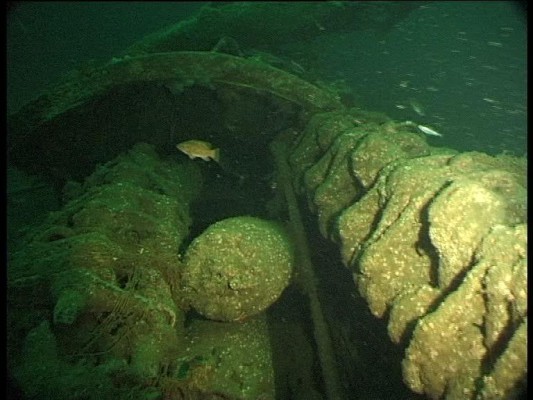 Turning aft the engines point astern, which is where I will explore next (Innes McCartney).
Turning aft the engines point astern, which is where I will explore next (Innes McCartney).
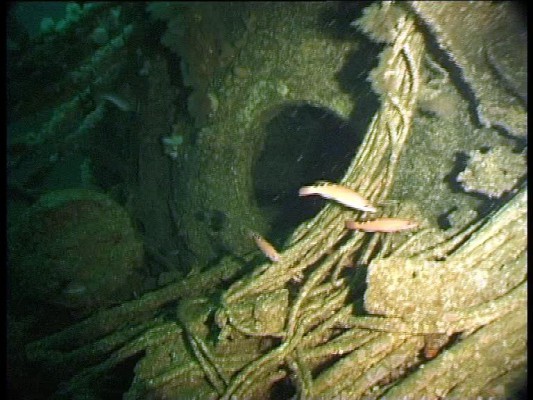 Turning and looking forward the open bulkhead hatch leading into the control room can be seen (Innes McCartney).
Turning and looking forward the open bulkhead hatch leading into the control room can be seen (Innes McCartney).
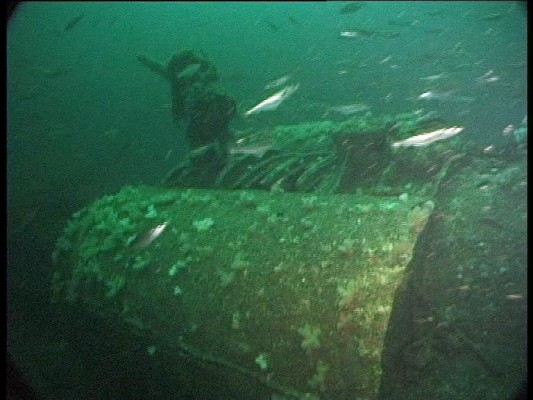 Aft of the conning tower two of the main tanks are still hanging on to the pressure hull (Innes McCartney).
Aft of the conning tower two of the main tanks are still hanging on to the pressure hull (Innes McCartney).
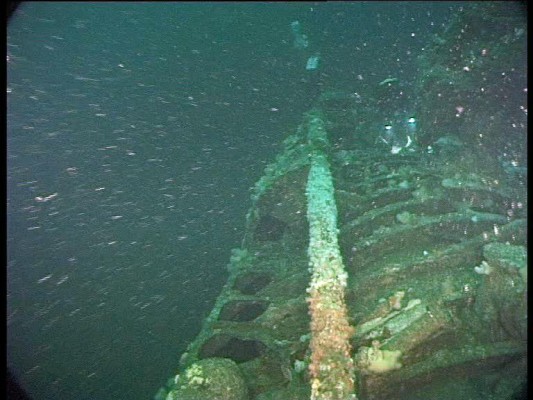 The forward radio mast survives even though most of the upper works have rotted away (Innes McCartney).
The forward radio mast survives even though most of the upper works have rotted away (Innes McCartney).
 Pressure-proof ready-use ammunition was stacked in lockers around the guns. They were soldered closed and could be popped open quickly for immediate firing when the U-boat surfaced (Innes McCartney)
Pressure-proof ready-use ammunition was stacked in lockers around the guns. They were soldered closed and could be popped open quickly for immediate firing when the U-boat surfaced (Innes McCartney)
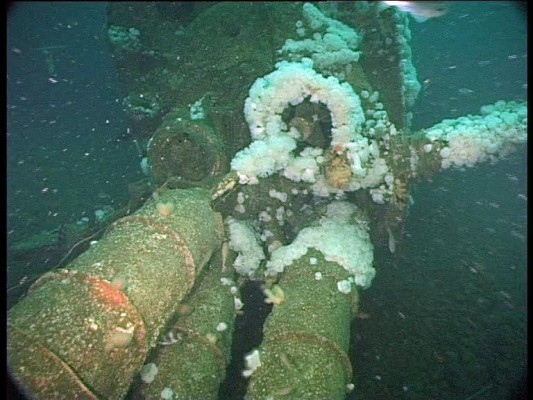 A white circle of anemones shows where one tube has broken away from the hull (Innes McCartney).
A white circle of anemones shows where one tube has broken away from the hull (Innes McCartney).
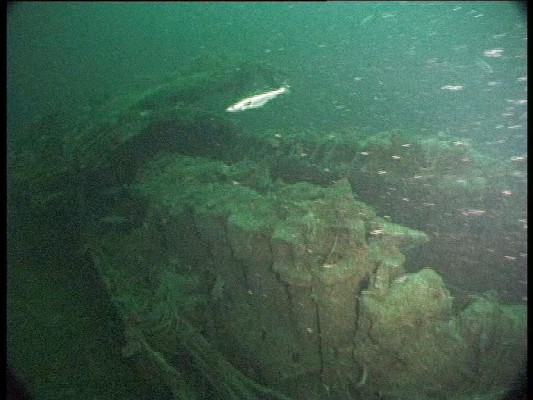 The diesel engines are now exposed (Innes McCartney)
The diesel engines are now exposed (Innes McCartney)
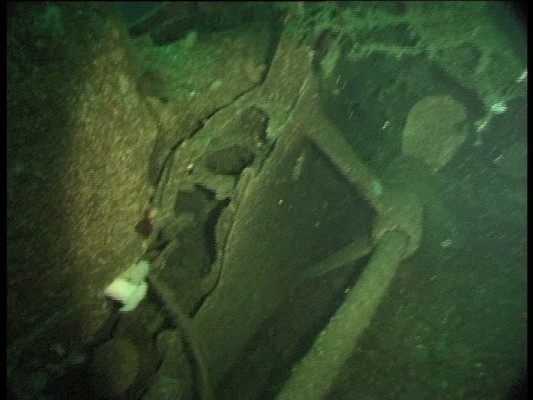 Port side prop shaft is bent and the “A” frame buckled (Innes McCartney).
Port side prop shaft is bent and the “A” frame buckled (Innes McCartney).
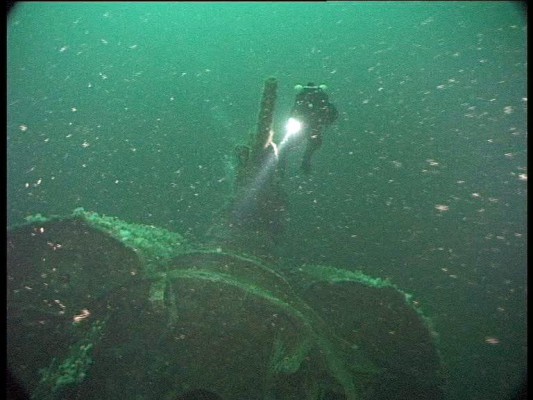 Diver by conning tower (Innes McCartney).
Diver by conning tower (Innes McCartney).
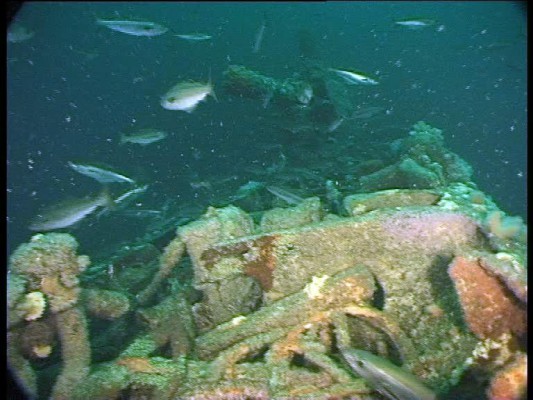 Above the torpedo tubes on the main deck the 105mm gun can be seen in the distance (Innes McCartney).
Above the torpedo tubes on the main deck the 105mm gun can be seen in the distance (Innes McCartney).
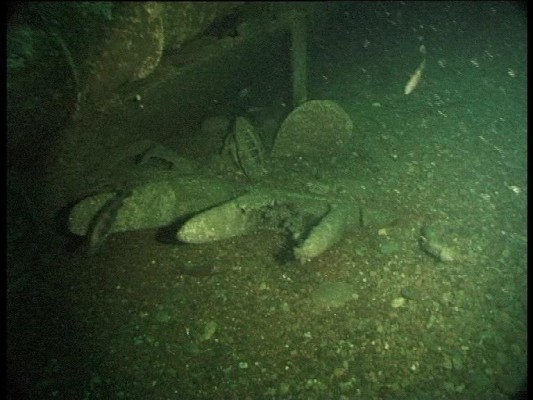 Starboard side prop partially buried (Innes McCartney).
Starboard side prop partially buried (Innes McCartney).
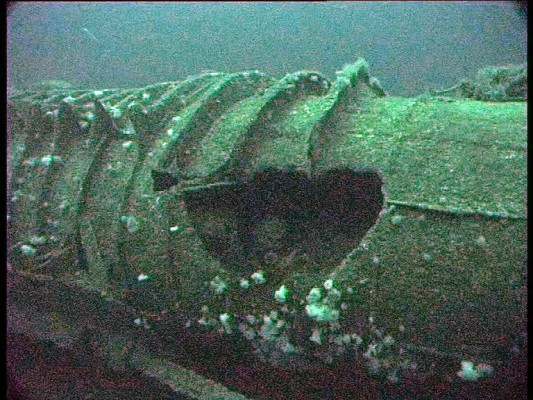 Damage in the port side hull probably caused in the collision (Innes McCartney).
Damage in the port side hull probably caused in the collision (Innes McCartney).
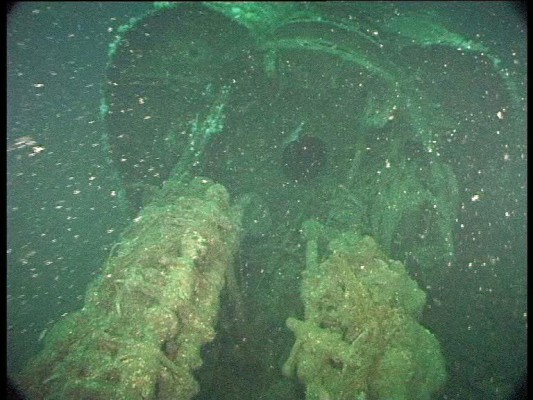 The engines with the control room hatchway behind. Ballast tanks either side (Innes McCartney).
The engines with the control room hatchway behind. Ballast tanks either side (Innes McCartney).
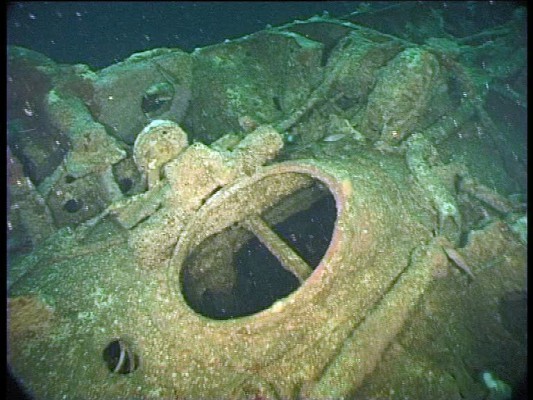 Aft torpedo hatch (Innes McCartney).
Aft torpedo hatch (Innes McCartney).
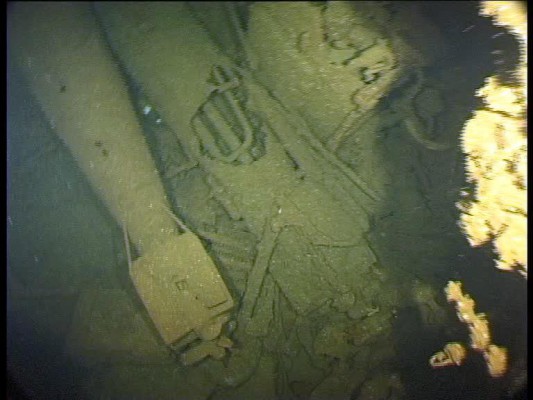 Torpedoes lying on the deck, having fallen from their stowage rack (Innes McCartney).
Torpedoes lying on the deck, having fallen from their stowage rack (Innes McCartney).
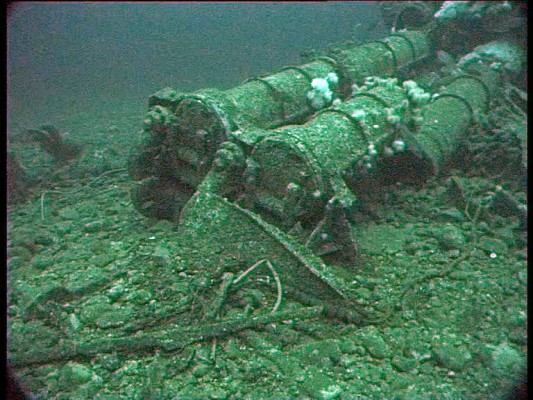 U89 had four bow tubes, three of which are visible, inner doors shut (Innes McCartney).
U89 had four bow tubes, three of which are visible, inner doors shut (Innes McCartney).
